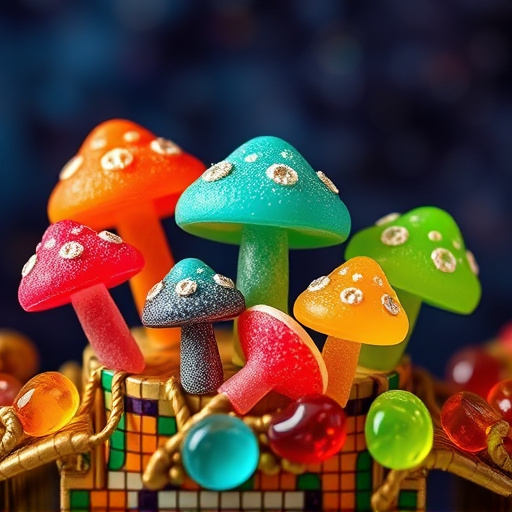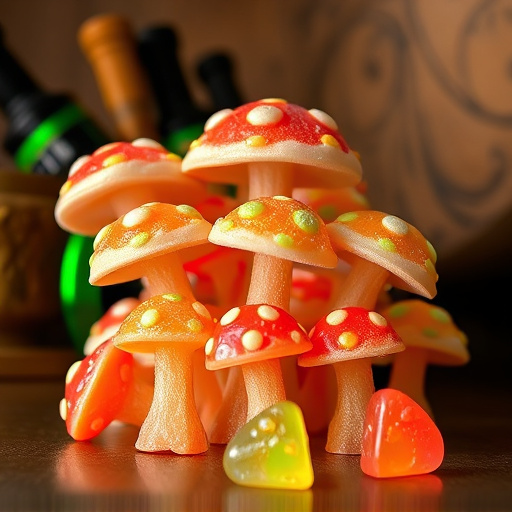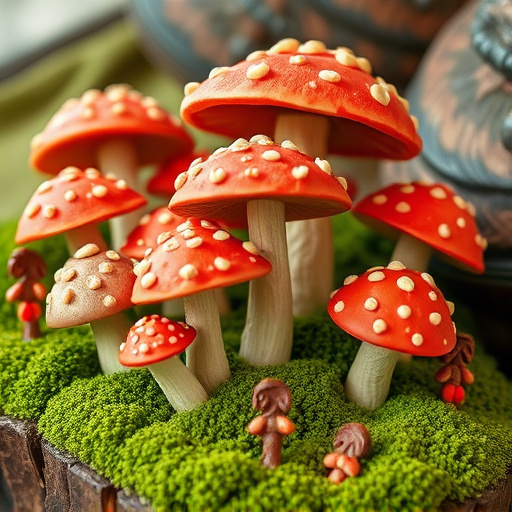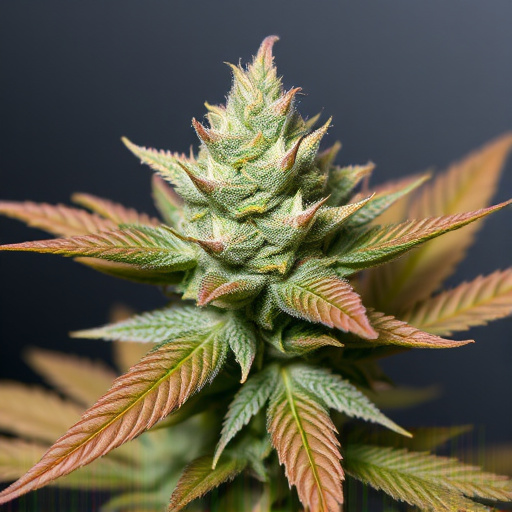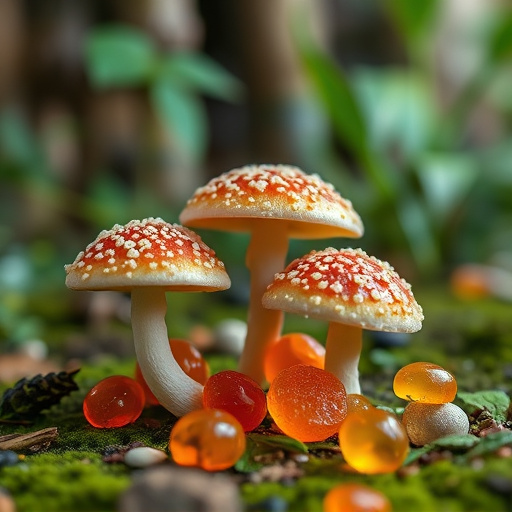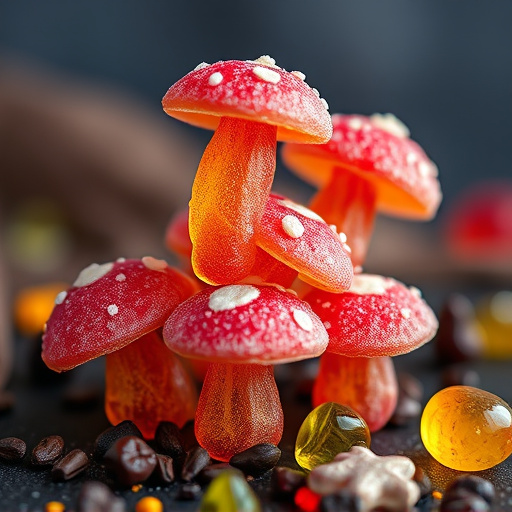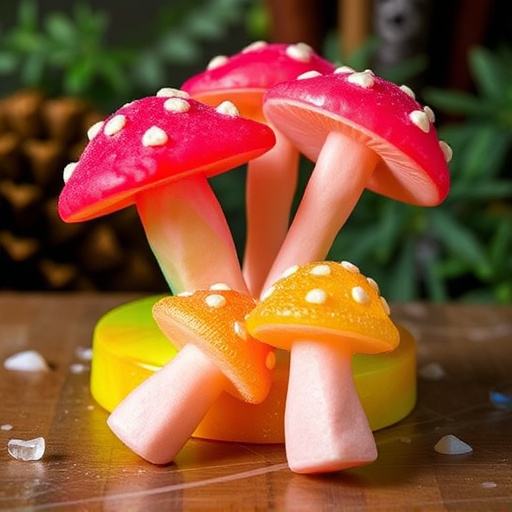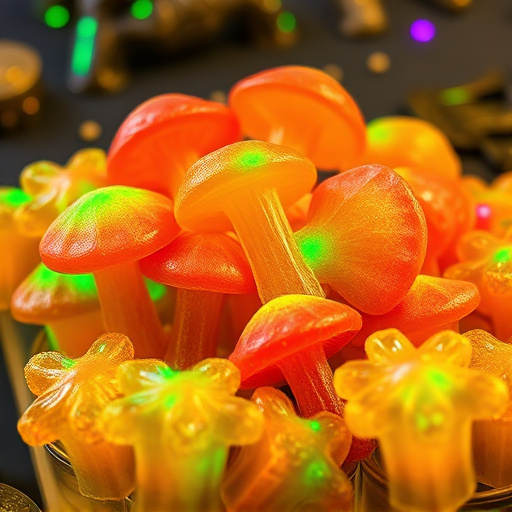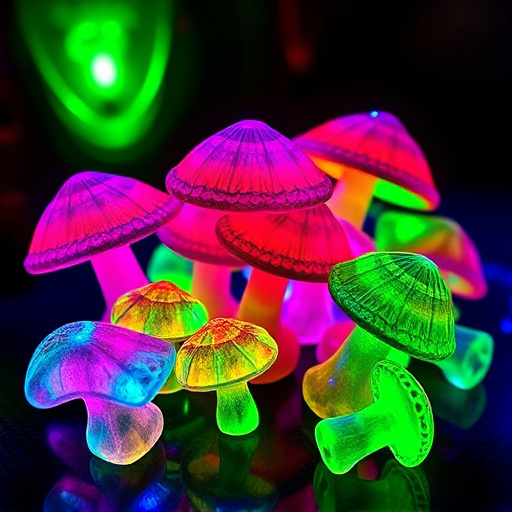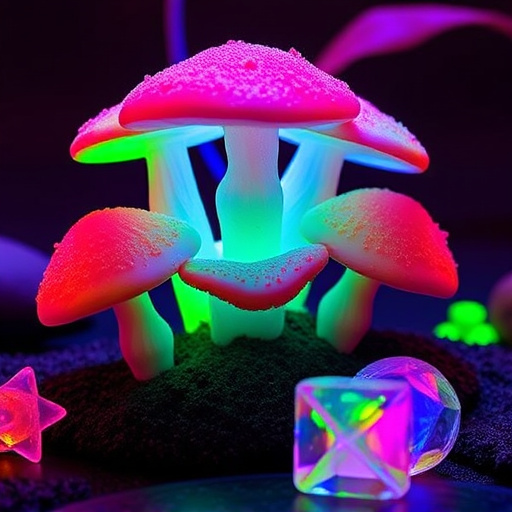Magic Mushroom gummies represent a modern reinvention of ancient practices, combining the spiritual and medicinal history of psychedelic mushrooms with contemporary therapeutic interests. With roots dating back thousands of years in indigenous cultures, these edible treats infuse psilocybin into delicious jelly candy form. Research explores their potential in treating mental health conditions, making them an appealing alternative for discreet and palatable options for mental wellness. However, responsible use and professional guidance are crucial due to varying effects and legal considerations. The history of Magic Mushroom gummies is tied to cultural shifts, evolving laws, and academic research into psilocybin's therapeutic benefits, offering a modern solution combining ancient tradition with contemporary technology for therapeutic exploration.
“Magic Mushroom Gummies: A Modern Twist on Ancient Tradition
Discover the intriguing world of magic mushroom gummies, a modern fusion of ancient practices and innovative food science. This article explores what these gummies are, delving into their historical roots as an alternative remedy and their growing popularity in today’s wellness trends. We’ll unravel the history of magic mushroom gummy usage, along with the potential benefits and essential precautions for those considering this unique consumable experience.”
- What Are Magic Mushroom Gummies?
- History of Magic Mushroom Gummies Usage
- Benefits and Precautions of Consuming Magic Mushroom Gummies
What Are Magic Mushroom Gummies?

Magic Mushroom gummies are a modern interpretation of an ancient practice. These edible treats infuse psilocybin, the active compound found in certain types of mushrooms known for their psychedelic properties, into delicious jelly candy form. The history of using magic mushrooms dates back thousands of years, with indigenous cultures around the world utilizing them for spiritual, medicinal, and ceremonial purposes. Over time, their use evolved, leading to contemporary interest in their potential therapeutic benefits.
Today, there’s a growing body of research exploring the therapeutic applications of psilocybin, including its promise in treating depression, anxiety, PTSD, and addiction. Magic mushroom gummies offer a discreet and palatable way to experience these effects, appealing to those seeking alternative approaches to mental health wellness. As with any substance, responsible use and seeking guidance from professionals are paramount when considering magic mushroom gummies or any psilocybin-containing product.
History of Magic Mushroom Gummies Usage
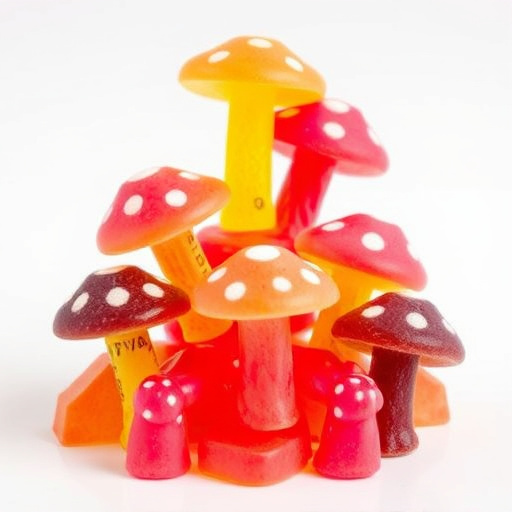
The history of Magic Mushroom gummies is intertwined with the broader cultural shift towards psychedelic exploration and the evolving landscape of recreational and therapeutic cannabis use. While their exact origins are hard to pinpoint, these innovative confectioneries gained prominence in the late 20th century, paralleling the rise of counterculture movements and academic research into psilocybin mushrooms’ potential therapeutic benefits. Initially, magic mushrooms were used in ritualistic and spiritual contexts, with indigenous cultures leveraging their properties for centuries. However, as society evolved, so did perceptions and applications; eventually, they found their way into mainstream culture through underground raves, music festivals, and alternative subcultures.
The transition from clandestine use to commercial production was facilitated by shifting legal landscapes and growing acceptance of psychedelic therapy. As scientific studies explored the therapeutic potential of psilocybin for treating depression, anxiety, and end-of-life distress, the demand for accessible and controlled methods of consumption increased. This shift led to the creation of Magic Mushroom gummies, offering a discrete, palatable, and consistent dosage form compared to traditional mushroom strains. Today, these gummies represent a harmonious fusion of ancient tradition and modern technology, providing users with an alternative means to explore consciousness and unlock potential therapeutic benefits.
Benefits and Precautions of Consuming Magic Mushroom Gummies
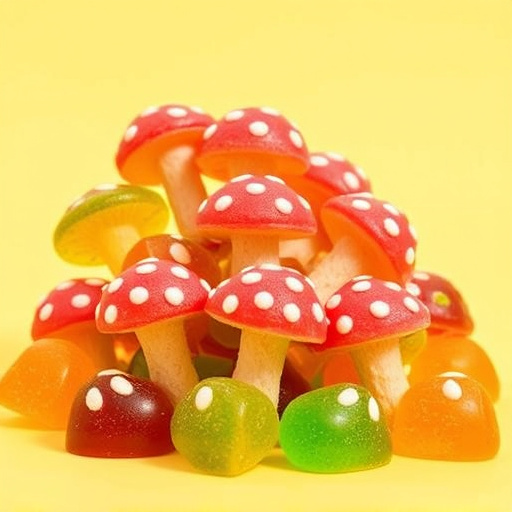
Magic mushroom gummies have gained popularity as a modern take on traditional psychedelic experiences, offering a convenient and potentially therapeutic method of consumption. These edible treats contain psilocybin, the active compound found in certain species of magic mushrooms, known for their mind-altering effects. The history of using magic mushrooms dates back centuries, with indigenous cultures utilizing them for healing and spiritual practices. However, modern interest in psilocybin-based gummies has sparked both curiosity and debate.
When it comes to benefits, some users report enhanced creativity, improved mood, and increased mindfulness after consuming magic mushroom gummies. Studies have explored their potential therapeutic applications in treating depression, anxiety, and trauma. Precautions are essential, though, as these gummies can induce intense psychological effects, including hallucinations and altered perception. Dosage is critical; an overdose may lead to unpleasant experiences or, in rare cases, adverse physical reactions. As with any psychedelic substance, it’s crucial to set a safe and comfortable environment, have a clear mind, and be aware of personal limits to ensure a positive and beneficial experience.
Magic mushroom gummies have evolved from their traditional, often clandestine, usage to a modern, regulated form of psilocybin therapy. The history of magic mushroom gummies as a recreational drug dates back decades, but their legitimization and increased study in recent years signal a promising future for mental health treatments. Understanding the history of magic mushroom gummies usage is crucial in navigating their growing presence in wellness and therapeutic contexts. Despite precautions and potential risks, these gummies offer a unique, natural way to explore consciousness and address various psychological conditions, making them a game-changer in the field of mental health.
